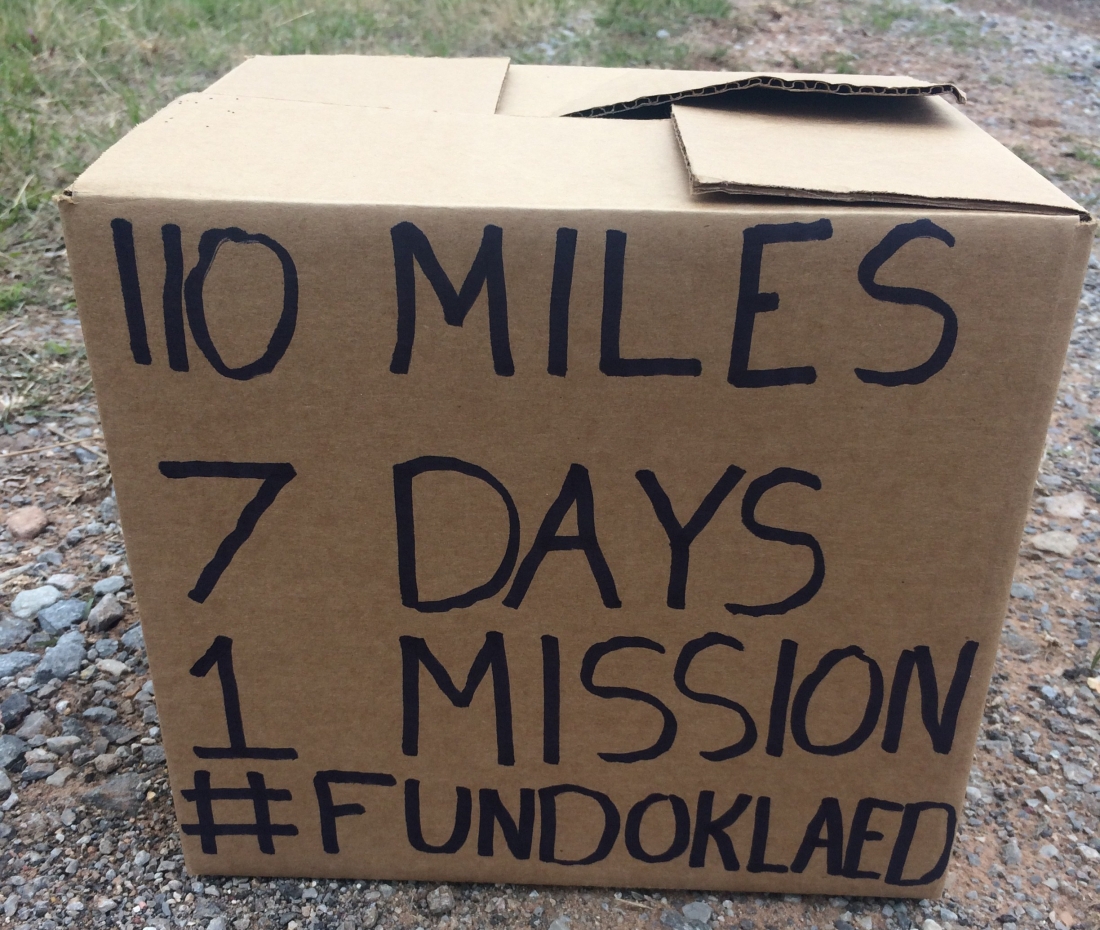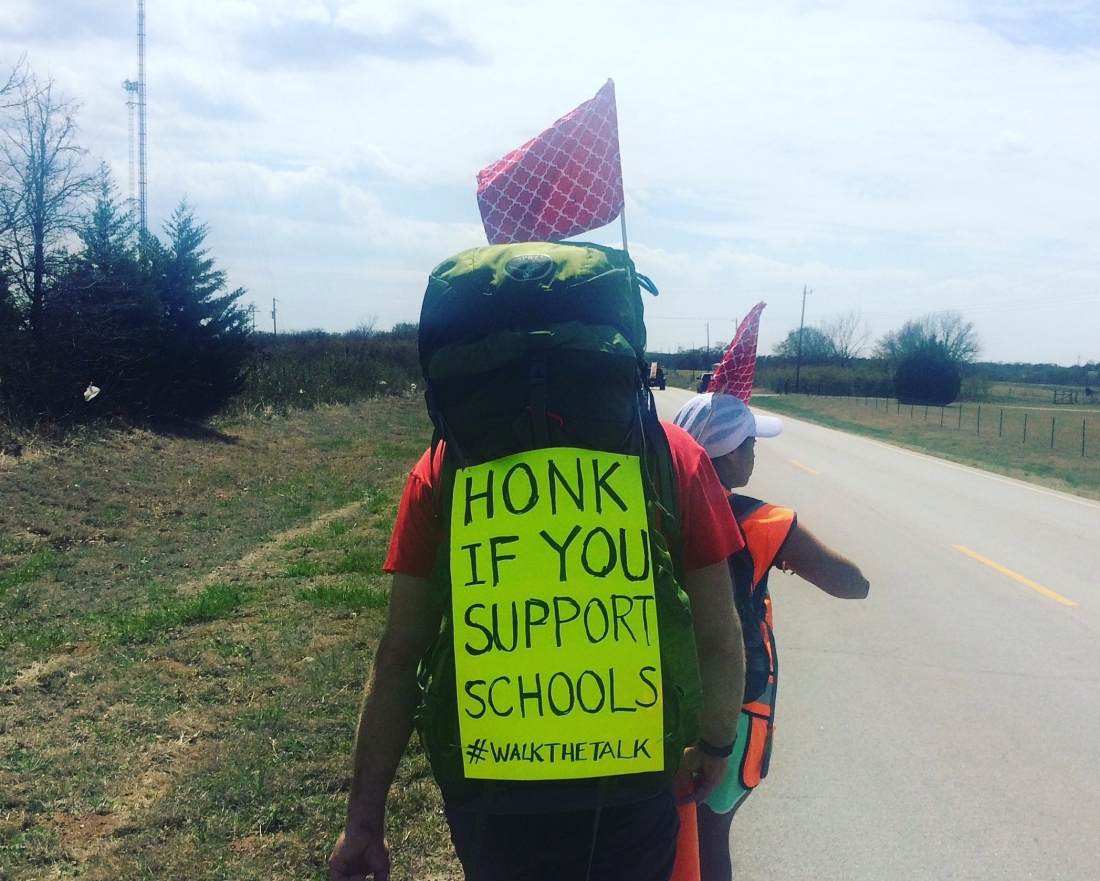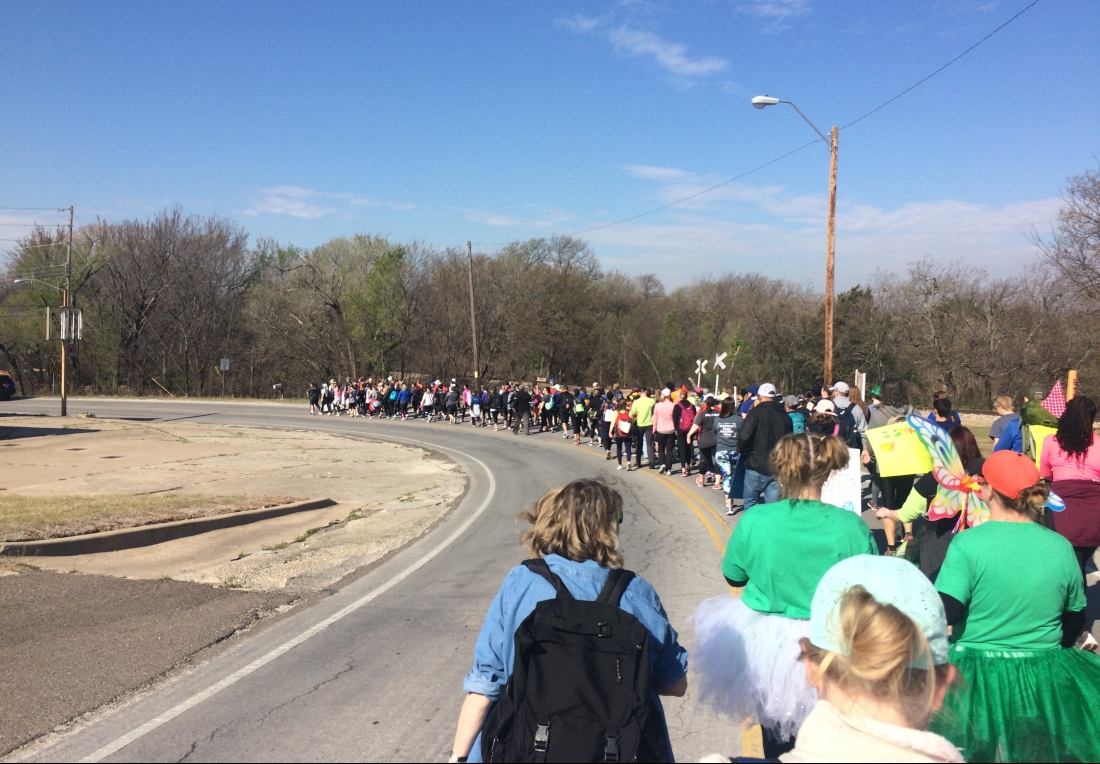My wife and I were halfway to Tulsa on the Turner Turnpike before the full realization hit me; I was about to walk 110 miles of Route 66 from Tulsa to Oklahoma City. I had been interviewed by a local news channel that afternoon, and I joked on the way that evening that I could not back out because I was to be on television that evening saying that I was going. I felt confident that the experience had been well planned by a coalition of leaders from the Tulsa Classroom Teachers Association, the Oklahoma Education Association, and the National Education Association. At the same time, however, I could not escape a growing sense of uncertainty. Will I be physically and mentally able to complete such a challenge? How will our march be received by the communities through which we will travel? How will this all end?
The idea for “March For Education #WalkTheTalk” was born out of local organizing meetings in Tulsa leading up to the Oklahoma Teacher Walkout, which began on Monday, April 2, 2018. The march was planned in part to bring further attention to the commitment, perseverance, and strength of Oklahoma’s educators, and more specifically, educators from within Tulsa Public Schools. The plan was to walk from Webster High School in Tulsa to the Oklahoma State Capitol in Oklahoma City over a period of seven days and six nights. The launch of the march took place on Wednesday, April 4, to honor the 50th anniversary of the assassination of Dr. Martin Luther King Jr. The march concluded the following Tuesday, April 10, to coincide with the 1966 arrival in Sacramento of 8,000 farmworkers who, led by Cesar Chavez, marched 340 miles across California to bring attention to those striking against planters in the San Joaquin Valley.
As a teacher from the Oklahoma City metro, I began this experience considering myself a “guest marcher.” I viewed my participation in part as a show of solidarity with my soon to be new Tulsa friends. I learned very quickly the first day that I would not be viewed as an outsider by Tulsa marchers. There are over 2,500 teachers in Tulsa Public Schools, and while many marched with family and friends, most of us that first day were marching in front of and behind complete strangers. I met some people on that first day march from Tulsa to Kellyville that I would not see again because they were only participating in the first leg. There were others I met on Wednesday, April 4, who I learned were part of a group that would soon come to be called “Through Marchers,” a group of close friends with a shared experience that cannot be fully captured with the words expressed here.
The first and last days of marching were not exceptionally difficult because additional marchers and the anticipation of what was to come provided a helpful dose of adrenaline. The first evening, however, was particularly difficult for me. As each day passed, my body began to acclimate to the average 15 mile walk, making each evening less difficult than the one before, but upon arriving at Kellyville High School on Wednesday afternoon my muscles quickly began to shut down. The desire to get to know each other as marchers and organizers was complicated by our need to care for our ailing bodies. By 9 p.m. the room was quiet, the lights were off, and marchers were sleeping indiscriminately around the cafeteria floor on wrestling and cheerleading mats.

During our six days of walking on Route 66 (the last day of walking took us off Route 66), there seemed to be not a single person travelling by vehicle that was unaware of what we were doing. If I had to guess, I would say that the number of honks of support numbered well into the thousands. By my count, the number of aggressive motorists, drivers that expressed frustration with our presence, was two. As uplifting as the travelers were, the support from local residents was at times completely overwhelming.
There was Larry, a retired 5th grade teacher from Sapulpa, who walked a few blocks from his house, joined our march for at least a mile, and then turned back toward his home offering prayers and best wishes.
There was the Department of Human Services building where staff gathered at the windows with cheers and signs expressing support and solidarity.
There was the conservative pastor of the Church of Christ who partnered with an interfaith group and an LGBTQ advocacy group to provide us lunch.
There was the daycare with young faces and sticky hands pressed hard against the glass trying to catch a glimpse of the marching teachers.
There was the group of elementary age kids with two women that offered us snacks and water and then identified themselves as homeschoolers, but nonetheless strong supporters of public education.
There was the lawyer from Tulsa that brought us lunch, a pizza for every two marchers, high atop a hill in someone’s driveway.
There was the team of Stroud teachers and families who took up a personal collection to allow us to stay in and utilize the state of the art facilities at Stroud Coliseum.
There was the truckload of 3rd grade boys who marched a full day with us, doubled back in the bed of mom’s truck only to march again with a different group, and then topped off the day with a game of basketball in the park in Luther.
There was the group of teenage girls that gave us helium filled balloons to tie to our packs providing an extra measure of visibility.
These experiences and countless others created an emotional state for marchers where tears were never far below the surface. The most often repeated comment as we passed by was, “Thank you for what you are doing!” To which we replied, “Thank you for your support! We are doing this for the kids!”

The 110 mile march from Tulsa to Oklahoma City seemed aggressive enough to satisfy my personal desire for an escalated means of nonviolent direct action, incredible enough to attract attention from multiple media outlets, and ambitious enough to elicit empathy from Oklahoma legislators most reluctant to approve further revenue raising measures for public education. No doubt other marchers felt as I did on that first day, that there was a very real possibility that the march would be cut short by a clear end to the walkout, that we would be bussed to the Capitol early because all of the union demands had been met with fully funded legislation. The efficacy and timing of the nine day walkout is easily debatable, but the impact and value of our march for education cannot be denied.

In the gymnasium at Northeast Academy in Oklahoma City, marchers were informed that we would be ushered the final mile to the Capitol by a high school marching band. Minutes later outside, I found my way near the front of the large crowd to see the Douglass High School Marching Band, “The Pride of the East Side,” ready to lead the way. The perfect representation of why proper funding for public education is so important was right there in front of me. Just blocks away from the Capitol, our parade was stalled, and we began chanting toward the band, “This… is… for… you!” When we arrived at the Capitol, I had the privilege to speak to the passionate crowd, where I said in part, “We marched for black students. We marched for Latinx students. We marched for native students. We marched for differently abled students. We marched for every underserved student population all over the state of Oklahoma. It is true what they say; a truly free, truly public education is the great equalizer in our society. But it must be fully funded!”
The perfect representation of why proper funding for public education is so important was right there in front of me.
As of writing, public education in Oklahoma is still not fully funded. But the greatest achievement of both the walkout and the march for education is the full knowledge of the possibilities of what mobilized and organized Oklahoma educators can accomplish together.

No comments:
Post a Comment
Note: Only a member of this blog may post a comment.